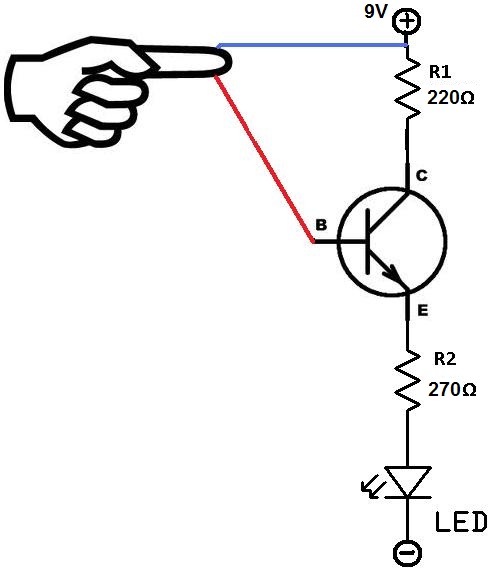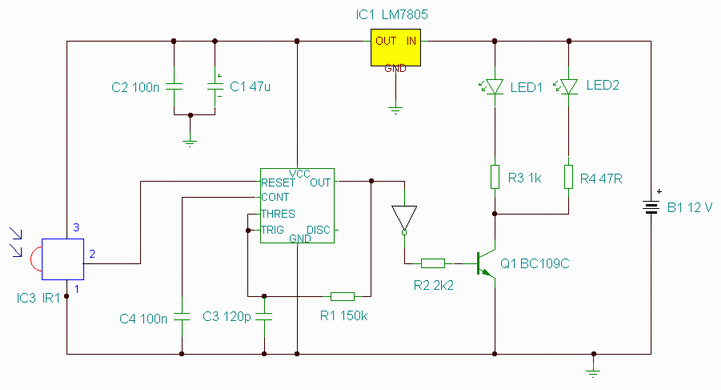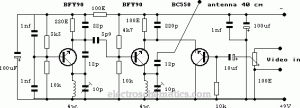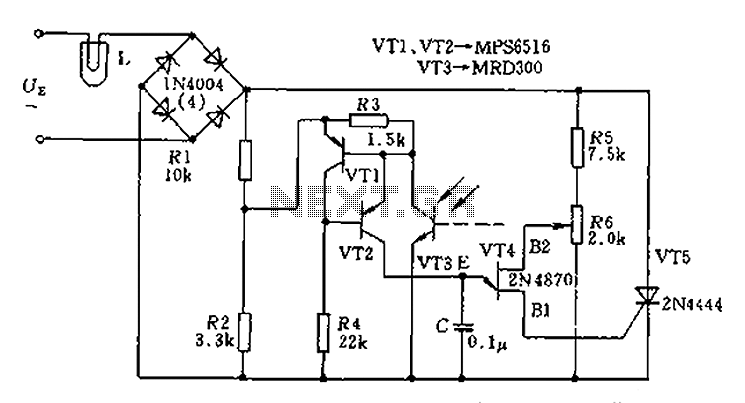
Double tube fluorescent emergency circuit 2
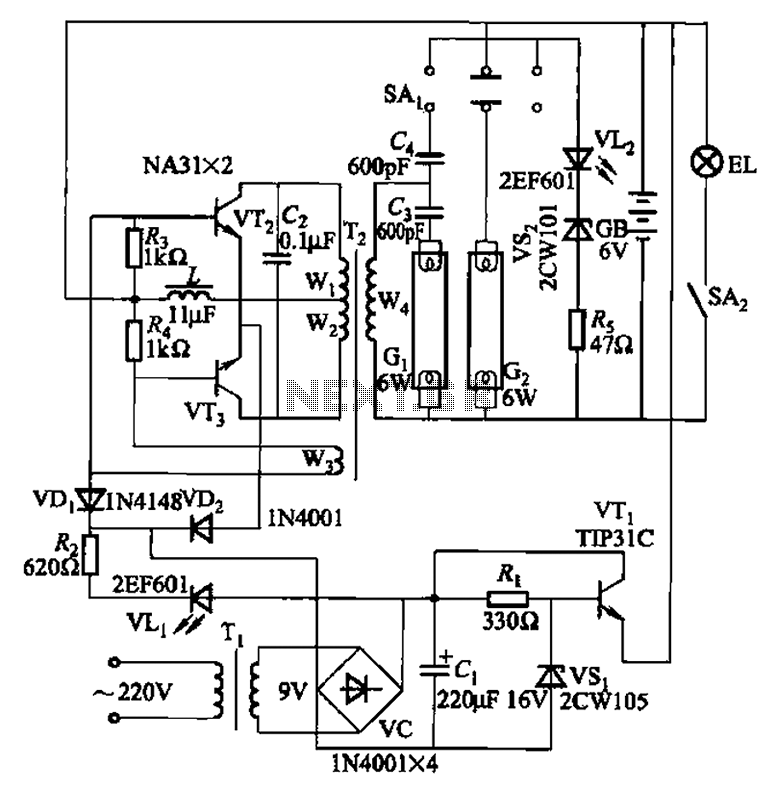
This is a Nissan Panasonic rechargeable emergency fluorescent lamp circuit. It features built-in 6V, 4Ah high-energy batteries that can be directly charged. The circuit supports two 6W fluorescent lamps. It includes functional switches SAi and SAz. When SAi is set to the charging position, the VDi diode is turned off, and the inverter circuit does not operate, allowing the external power supply to charge the battery. When SAi is set to either the single tube or double tube lighting position, the VTi is turned off, activating the inverter circuit to power the fluorescent lamps or the Gi Island and G2 lights. Additionally, when the switch is closed, the circuit can drive a 6.3V flashlight bulb (ELs) powered by the battery.
The Nissan Panasonic rechargeable emergency fluorescent lamp circuit is designed for versatility and efficiency in emergency lighting situations. The high-energy 6V, 4Ah batteries are integral to the system, providing a reliable power source that can be recharged through an external supply. The circuit architecture includes a dual-function switch system, where SAi serves to toggle between charging and lighting modes. In the charging position, the circuit is designed to prevent inverter operation, ensuring that the battery is charged safely without drawing power for lamp operation.
When the switch is set to the lighting position, either for a single or dual fluorescent lamp, the inverter circuit is activated. This allows the circuit to convert the battery's DC voltage to the necessary AC voltage required to operate the fluorescent lamps, ensuring bright and efficient illumination. The inclusion of a diode (VDi) in the charging mode further protects the circuit by preventing backflow of current, thus safeguarding the battery and the circuit components.
The additional switch, SAz, can be integrated into the circuit to provide further control options, potentially allowing for different lighting configurations or additional functionalities. The design also accommodates the use of a 6.3V flashlight bulb (ELs), which can be powered directly from the battery when the switch is closed, providing an alternative light source in emergencies.
Overall, this circuit exemplifies a well-thought-out design for emergency lighting, combining rechargeable battery technology with efficient fluorescent lighting solutions, while also offering flexibility through its switch configurations.As a Nissan Panasonic rechargeable emergency fluorescent lamp circuit. Built-in 6V, 4A. h high-energy batteries can be directly charged. It allows the two 6W fluorescent lamps. SAi, SAz functional switch. When SAi appropriated charging position, VDi diode is turned off, the inverter circuit does not work, external power supply for battery charging; when SAi appropriated a single tube or double tube lighting position, VTi is turned off, the inverter circuit, a fluorescent lamp or Gi Island and G2 lights. Just when the switch is closed site, battery-driven light-emitting 6. 3V flashlight bulb ELs.
The Nissan Panasonic rechargeable emergency fluorescent lamp circuit is designed for versatility and efficiency in emergency lighting situations. The high-energy 6V, 4Ah batteries are integral to the system, providing a reliable power source that can be recharged through an external supply. The circuit architecture includes a dual-function switch system, where SAi serves to toggle between charging and lighting modes. In the charging position, the circuit is designed to prevent inverter operation, ensuring that the battery is charged safely without drawing power for lamp operation.
When the switch is set to the lighting position, either for a single or dual fluorescent lamp, the inverter circuit is activated. This allows the circuit to convert the battery's DC voltage to the necessary AC voltage required to operate the fluorescent lamps, ensuring bright and efficient illumination. The inclusion of a diode (VDi) in the charging mode further protects the circuit by preventing backflow of current, thus safeguarding the battery and the circuit components.
The additional switch, SAz, can be integrated into the circuit to provide further control options, potentially allowing for different lighting configurations or additional functionalities. The design also accommodates the use of a 6.3V flashlight bulb (ELs), which can be powered directly from the battery when the switch is closed, providing an alternative light source in emergencies.
Overall, this circuit exemplifies a well-thought-out design for emergency lighting, combining rechargeable battery technology with efficient fluorescent lighting solutions, while also offering flexibility through its switch configurations.As a Nissan Panasonic rechargeable emergency fluorescent lamp circuit. Built-in 6V, 4A. h high-energy batteries can be directly charged. It allows the two 6W fluorescent lamps. SAi, SAz functional switch. When SAi appropriated charging position, VDi diode is turned off, the inverter circuit does not work, external power supply for battery charging; when SAi appropriated a single tube or double tube lighting position, VTi is turned off, the inverter circuit, a fluorescent lamp or Gi Island and G2 lights. Just when the switch is closed site, battery-driven light-emitting 6. 3V flashlight bulb ELs.

